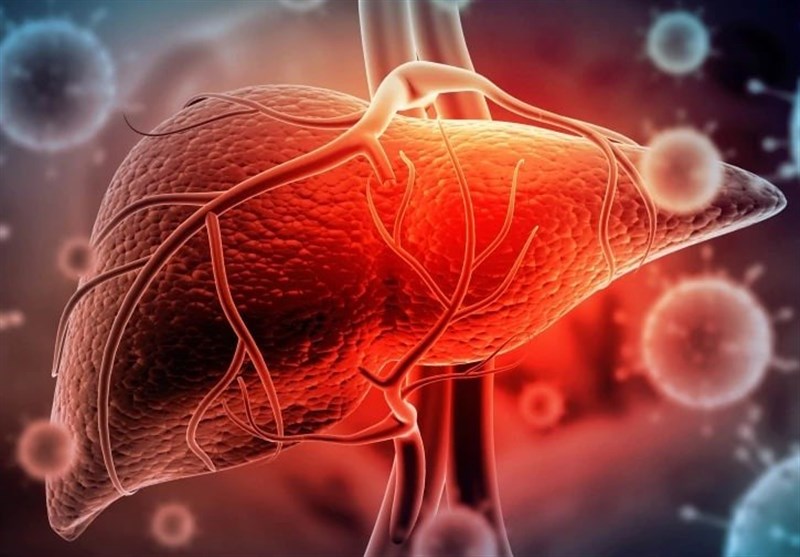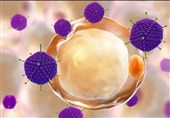More Reports of Concerning Severe Liver Inflammation among Young Children
TEHRAN (Tasnim) – A pediatric hepatitis outbreak with mysterious origins is continuing to grow, as more countries investigate cases of kids developing the liver illness without a known cause.
Over 200 children in over 20 countries, primarily UK and USA, have contracted sudden and acute hepatitis of unknown origin.
Many have required liver transplant and have had liver failure, with one death. Children range in age from 1 month to 16 years of age.
Uncharacterised and so far rare cases of unexplained severe liver inflammation among young children. These cases of unexplained hepatitis have been appearing in elevated numbers worldwide since November 2021. The most often-detected pathogen is a human adenovirus (HAdV) but work continues to ensure that isn’t just a coincidental finding as cases are identified in more countries, InvesBrain reported.
What is hepatitis?
Hepatitis (Greek hêpar, “liver”) is inflammation of the liver which can result in a range of outcomes. If rapid onset (acute) and viral, signs and symptoms can range from mild to severe. Asymptomatic acute viral hepatitis is more common than symptomatic versions (detectable upon liver enzyme testing). And hepatitis also comes in a chronic form that can build from acute illness.
Symptoms can be indistinguishable among the different viral causes of hepatitis and can include fever, jaundice, malaise, fatigue, light stools, abdominal pain and diarrhoea.
Diagnosis can include the detection of specific genetic material, viral proteins (antigens) or detection of anti-virus IgM antibodies. The detection of elevated levels of alanine aminotransferase (ALT; found mostly in the liver) and aspartate aminotransferase (AST; found in several tissues) can flag some degree of liver cell damage, which has resulted in the release of these enzymes into the bloodstream where they are not normally elevated.
Disease in this new outbreak
In approximately 10% of the recent cases of this unexplained severe liver inflammation among young children, which are generally being noticed in younger children, inflammation was so severe that a liver transplant was required. Symptoms have included jaundice, diarrhoea, vomiting and abdominal pain and raised AST or ALT (> 500 UI/L). All of the originally described 13 cases were hospitalized and one required a liver transplant.
Where has this round of unexplained hepatitis been noted so far?
Scotland, England, Ireland, The United States, Spain, Belgium, Denmark, France, Italy, the Netherlands, Norway and Romania have reported cases.
If these are all cases with the same cause, this supports an infectious agent’s role – in some way – rather than a more localized foodborne or chemical contamination event.
The WHO initially described that since the WHO Disease Outbreak News on Acute hepatitis of unknown aetiology – the UK and Northern Ireland was published on 15 April 2022, there have been continuing further reports of cases of acute hepatitis of unknown origin among young children. It is not yet clear if there has been an increase in hepatitis cases, or an increase in awareness of hepatitis cases that occur at the expected rate but go undetected. While adenovirus is a possible hypothesis, investigations are ongoing for the causative agent.
What might be the cause?
None of the children, aged 1 month to 16 years, with this clinical syndrome have tested positive for any hepatitis virus.[14] The most commonly detected agent so far has been a human adenovirus (HAdV) in 74 cases, particularly HAdV-41 which has been characterised in 18 (24%) of those 74 cases.[14] This is on a background of increased levels of HAdV- a very common virus normally – being detected in the community.[12,14] It’s also very noteworthy that 19 (26%) of those 74 cases tested positive for both an HAdV and SARS-CoV-2 as coinfections.[14]
We don’t yet have evidence of any virus in the liver cells of an ill child.
The adenoviruses
There are seven species of HAdV containing around 50 distinct human-infecting enveloped DNA viruses that are more often thought of as agents of the “common cold”. Transmission occurs from the throat, faeces, eye or urine, depending on the HAdV type.
Most infections are mild or asymptomatic but some HAdVs have been associated with specific outcomes like adenoidal–pharyngeal conjunctivitis (types 3, 4, 7, 14), acute respiratory outbreaks (types 4, 7, 14, 21), epidemic keratoconjunctivitis (types 8, 19, 37, 53, 54) or venereal disease (HAdV-37). HAdV-40 and HAdV-41 can be isolated from the faeces of young children with acute gastroenteritis and are a major cause of infantile viral diarrhoea.
When associated with hepatitis after in the immunocompromised children (a very different situation to the children in this new outbreak) HAdVs have been found in (see Twitter thread by Dr Farid Jalali) biopsied liver tissues as inclusions within the nucleus.
It may be simple, it may be complex
It may not be that any single virus is the cause though. Concurrent infection with another virus may create disease or an immune-mediated process due to prior infection by something, that could be at play. This means SARS-CoV-2 is worth consideration. Not as high a proportion of children have tested positive for the virus that causes COVID-19, but that doesn’t rule it out. Nor have we yet ruled out anything entirely new, or specific evolution o HAdV-41 into something that has a direct liver-damaging outcome.
Misinformation and conspiracy
Some have of course jumped on the anti-virus bandwagon and blamed childhood COVID-19 vaccination. This is easily debunked as most children were too young for vaccination.
Direct causes and possible cofactors
A lot of cases have tested positive for an HAdV, but it may not be that simple since there are often HAdVs circulating in the community. So we can’t yet rule out another factor entirely or interaction between multiple factors.
Ways to stop the spread of adenoviruses
More severe disease upon HAdV infection because of reduced or absent immunity due to lockdowns preventing infections
- SARS-CoV-2 (recent or novel variant and/or an immune imprint left by it) + HAdV
- HAdV + a toxin, drug or other non-pathogen (environmental) exposure
- An entirely novel pathogen (substitute that into the list above as appropriate)
HAdVs have a history of surviving in a manufactured aerosolized state. Ultraviolet light dramatically reduced very high loads of HAdV-2 in an aerosolized suspension, in a study from 1964. This suggests measures to reduce viral loads in aerosols – the same that would work to reduce influenza virus, enterovirus and SARS-CoV-2 virus infections for example – should be hugely useful here as well. We should have already begun investing in this technology. Perhaps this serves as yet another reminder of why we should if we haven’t?
Handwashing also rates here as a lot of viruses and bacteria spread by contact with contaminated surfaces.






